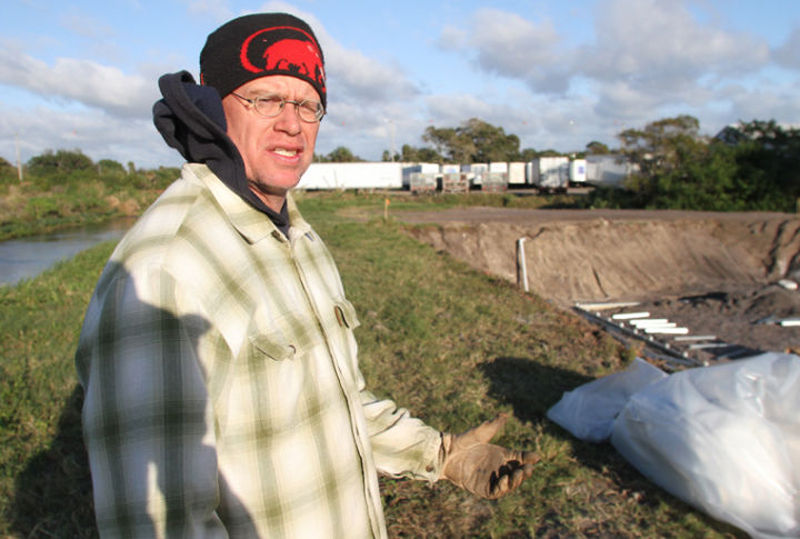VERO BEACH — Standing on the precipice of a freshly dug crater, with the temperature making Florida residents think of the Ice Age, Dr. Andy Hemmings talks about the future of the Vero Man site.
Director of Mercyhurst Archaeology Institute Dr. Andy Hemmings, is one of three archaeologists heading up the dig. Hemmings is a Florida-trained archaeologist and will be in charge of the day-to-day activities at the site.
Currently, the crew is erecting a weather port to protect the dig site from the elements. They now begin the shovel and trough work, opposed to the heavy dirt-moving equipment.
The site was chosen because of the results of the core samples and lack of underground utility issues, according to Dan Jacobus, site manager.
“This is the least contaminated spot in the site,” said Jacobus.
As Hemmings looked at the fresh crater he commented, “To think, this was a grassy plain yesterday morning.”
Around 720 yards of dirt was removed from the site near US 1 and the canal. The site was chosen because it is as close to where the original site was around 1915.
Hemmings hopes to confirm assertions made by Dr. E.H. Sellards and looks forward to possibly finding more human remains.
The excavation will run until May 9. The 100-year-old site has been a source of controversy since it was discovered during the building of the main drainage canal for Vero Beach between 1913 and 1916, according to a press release by the Old Vero Ice Age Sites Committee (OVIASC).
Human skeletal remains of five individuals were found mixed with those of extinct Ice Age mammals, igniting world-wide interest but disagreement over the finds. At that time, human beings were not believed to have lived in the Americas at the end of the Ice Age 13,000 year ago.
Excavated materials will go to Mercyhurst University of Erie, Pa., whose extensive laboratory facilities are among the best in the United States for analyzing archaeological remains.
“It’s been a lot of talk, and now we’re done talking for a bit,” said Hemmings.
Funds are still needed to complete the excavation. Donations in support of the dig can be made through www.OVIASC.org.

